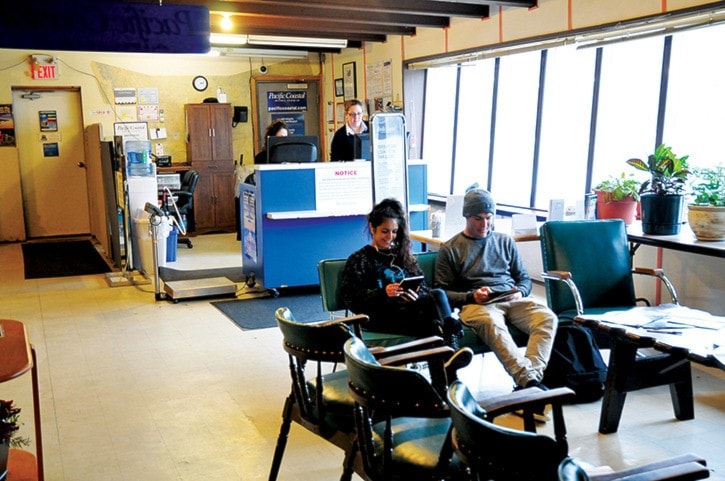As a new terminal building for the Trail Regional Airport inches toward shelf-readiness, provincial funding could help cover future construction costs nearing $2.9 million.
Trail council is just beginning 2016 capital budget talks so the project currently remains up in the air, but $8 million the B.C. Air Access Program announced last week, could help fund a new facility and other airport improvements required after a few bumps in the road last year.
“The proposed new ATB (airport terminal building) has been through Phase 1, which means we now have design schematics and solid pricing,” confirmed Kevin Jolly, Trail councillor and chair of the airport committee.
“A complete package has been submitted to council for consideration and a final decision has not been made at this time,” he added.
“The airport is viewed as an economic driver for the region - it will be considered in the context of the other significant capital works projects that council is contemplating.”
The air access program was announced last March as part of “BC on the Move,” a $1.8 billion plan to repair and grow the province’s network of roads, highways, bridges and airports, over 10 years.
A message heard locally and across the province, was that aviation is critical to growing the B.C. economy and small airports are the best way to connect communities.
The ministry committed $24 million over three years for public airports, last year $6 million was allocated to fund a dozen projects at ten regional and municipal airports.
Plans for a new Trail terminal were in early stages during the first grant cycle, therefore not eligible.
Jolly says the city is exploring application requirements before the April 8 deadline, and seeking clarification of the program’s terminology and how it relates to the type of facility Trail is considering
“Overall, I believe we are making steady progress at the airport in improving the facility with a view towards expanding that is connected to consumer demand,” he added.
There’s hope the grant program will lift another airport upgrade off the ground.
Trail council recently rejected five proposals for new security and weather cameras after the quotes varied in scope and came in well above budget, ranging from $33,000 to $80,000.
The project remains on the radar because updated weather cameras would allow TRA forecast conditions to be viewed in downtown Trail and at Kootenay Boundary Regional Hospital.
Additionally, a new security system with improved camera resolution is required to keep tabs on the property, especially during off-hours.
The need for the latter surfaced last summer when the city’s new parking machine was broken into during the evening of July 23 - and financial loss snowballed above $12,000 before the machine was re-installed two months later.
“The credit card-capable parking machine was broken into just one week after it was put into service,” said Jolly.
The receptacle had to be shipped back to the manufacturer for repair, which added to a $7,500 “opportunity cost” over the 72-day period when the city was unable to collect parking lot fees.
The security and weather camera upgrades meet the requirements for “maintaining safe and reliable airport facilities” and should be eligible under the program, added Jolly.
Through B.C. Air Access grants, the ministry shares costs with public airports on projects such as lighting and navigational systems, terminal building expansion or upgrades, and runway improvements.
These types of projects allow airports to improve safety, accommodate larger aircraft, support more frequent flights and enable the continued growth of local and provincial economies. The program also encourages funding partnerships with the federal government, local and regional governments, agencies, and the private sector.
